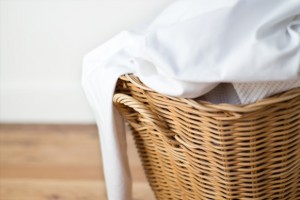Linens need regular washing for hygienic reasons. By cleaning your sheets, pillow cases and blankets, you can also prolong the life of the fabric. Of course, that is so long as you clean them properly. Learn from the following laundry mistakes to keep your sheets safe.
Your Linens Come Out with Residue
Undissolved detergent usually points to an overloaded washer. It could also indicate the wrong water temperature. Liquid detergents suit cold water; powders need high temperatures to breakdown. That said, hot water can weaken cloth fibers.
Residue may also arise when rinsing with hard water. Hard water contains more minerals than soft water. Water softeners attach to the household tank, ridding the water of things like calcium and magnesium. Consider adding this to your home if you face this problem.
Your Sheets Bleed Colours or Fade
Colour bleeding occurs when you wash newer fabrics of mixed colours together. For instance, throwing whites and reds together is a recipe for pink sheets. Separate the dark and light colours, then consider the different materials: some are more resilient to heat than others.
When treating stains, do so before washing. Careful what you use, though: it may damage other linens in the wash (i.e. bleach). The same goes for heavily soiled fabrics.
Regardless of dirtiness, wash in small loads to prevent many of the aforesaid problems. As well, use mild detergents. They are less harsh and preserve colours and texture.
Your Sheets Come Out Smaller, Tattered, or Weakened
Washers and dryers sport a few settings. The knob positions tell us which fabrics to lump together. For example, modern machines have a setting for delicates.
Dryers often have various heat settings, too. Choosing the wrong setting can damage the cloth, just like washing and drying with incompatible materials. Towels and sheets are often not suitable together in the dryer. Check your labels when in doubt!

